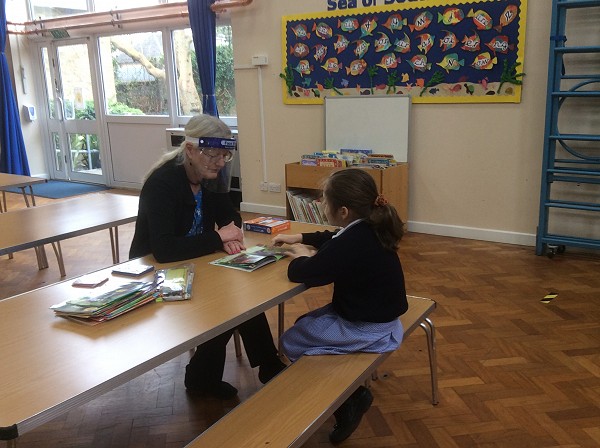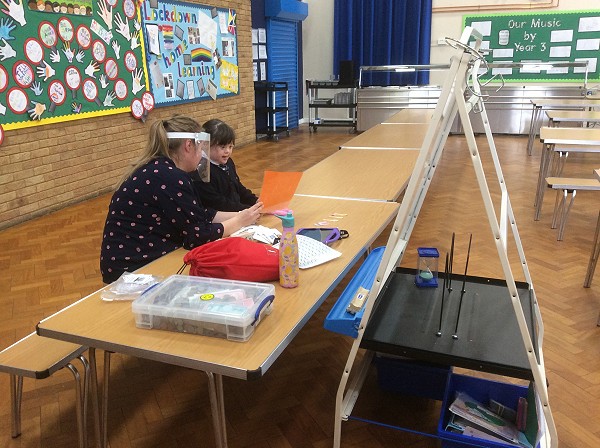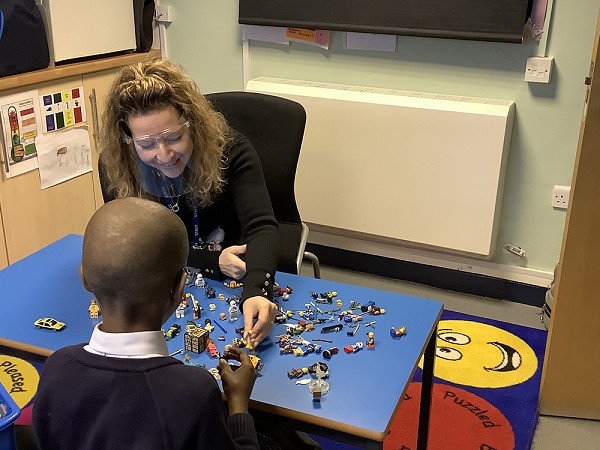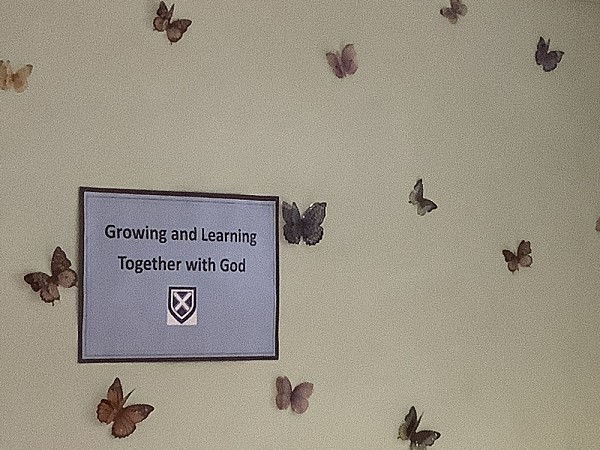Inclusion
Further information about Inclusion will be added here shortly.
SEND
At St. Andrew’s we implement a policy that will enable all children to reach their full potential through the efficient identification of educational, behavioural and physical strengths and weaknesses.
The progress of all children is assessed and tracked at regular intervals. If it is identified that a child is not making the expected progress or requires additional support we work closely with parents to provide an individual programme.
We see the involvement of all parties crucial to the success of such programmes. At times it is deemed necessary to involve outside agencies such as the London Borough of Hillingdon Educational Psychology Service. Parents are fully consulted if this occurs.
We have an experienced team of Teaching Assistants, who are guided by class teachers and the SENDCo.
Mrs Robyn Gibson, SENDCo can be contacted via the SCHOOL OFFICE.
Our SEND Information Report, SEND Policy and Equality Objectives can be found on our SCHOOL POLICIES PAGE.


Support for all
PASTORAL SUPPORT


At St. Andrews CofE primary we employ a pastoral care worker. The goal of their position is to work with pupils toward better emotional and social skills in the hopes of encouraging their work in school, relationships and their life overall.
Our Pastoral Support staff provide:
- Individual or small group interventions.
- The Nurture Room for children to find quiet and a listening ear when they are struggling as well as a place to run interventions.
- Confidence building activities by creatively utilising games, books, multiple resources on emotions/relationships/social skills, crafts, chats and more.
- Support to staff and students alike.
Zones of Regulation
At St. Andrew’s we are rolling out a new approach called the Zones of Regulation.
The Zones of Regulation is a curriculum geared toward helping students gain skills in consciously regulating their actions, which in turn leads to increased control and problem solving abilities.
All classes have the Zones of Regulation on display – they are sometimes referred to as the Emotions or Feelings Zones.
What are the Zones of Regulation?
Rooted in cognitive behavioural therapy, the Zones of Regulation is a framework that uses four colours to help students identify their feelings and level of alertness and provides strategies to support emotional regulation. By understanding how to notice their body’s signals, detect triggers, read social context, and consider how their behaviours impact those around them, students learn improved emotional control, sensory regulation, self-awareness, and problem-solving skills.
The colours
(These are the Zones as explained by Leah M. Kuypers)
The Blue Zone
The Blue Zone is used to describe low states of alertness, such as when one feels sad, tired, sick, or bored. This is when one's body and/or brain is moving slowly or sluggishly.
The Green Zone
The Green Zone is used to describe a regulated state of alertness. A person may be described as calm, happy, focused, or content when in the Green Zone. This is the zone students generally need to be in for schoolwork and for being social. Being in the Green Zone shows control.
The Yellow Zone
The Yellow Zone is also used to describe a heightened state of alertness; however, a person has some control when in the Yellow Zone. A person may be experiencing stress, frustration, anxiety, excitement, silliness, nervousness, confusion, and many more slightly elevated emotions and states when in the Yellow Zone (such as wiggly, squirmy, or sensory seeking). The Yellow Zone is starting to lose some control.
The Red Zone
The Red Zone is used to describe extremely heightened states of alertness or very intense feelings. A person may be experiencing anger, rage, explosive behavior, panic, terror, or elation when in the Red Zone. Being in the Red Zone can best be explained by not being in control of one's body.
How do we use and manage it here at St. Andrew’s?
In each of the classrooms, when the children arrive at school each day, they identify which zone they are in (which emotions they are feeling). They do this by moving their name on to the colour/zone which most matches how they feel. Throughout the day the children may move their names onto different colours/zones, depending on how they are feeling. All classes have a whole class display of the Zones of Regulation. Some children have their own personal timetable for recording their feelings throughout the day, or have an individual set of the zones of regulation on their desk so that they can regulate their feelings more frequently throughout the day.
How do we promote self-regulation?
There are a range of suggestions that the children know about to help them manage their emotions and feelings, depending on which zone they are in. Here are some examples that we use with the children when they identify that their feelings have changed.
For the Blue Zone – increase arousal:
- think happy thoughts
- talk about your feelings
- rub hands together
- run on the spot
- shoulder rub
- ask for a hug
- swinging or spinning
- stretching or jumping jacks
- strong scents
- vibration
- drink water
- crunchy foods
- bright lights
- listening to loud music
For the Green Zone – maintaining:
- keep your eyes on the teacher
- remember your daily goals
- finish your homework
- think happy thoughts
- be a good friend
- help others
- work hard
- smile
For the Yellow – decrease arousal:
- talk to my parents/friends
- take 3 deep breaths
- do a wall push up
- use a fidget
- go for a walk
- take a break
- read
- deep pressure
- slow movement
- heavy work to muscles
- soft lighting
- listen to music
- chewy foods
For the Red Zones – decrease arousal:
- take three deep breaths
- how big is my problem – the size of your reaction should match the size of the problem. How big do others see the problem? How big should your reaction be?
- jump on a trampoline
- relax your muscles
- talk to an adult
- sensory break
- push the wall
- count to 20
- walk away
- STOP!
- deep pressure
- slow movement
- heavy work to muscles
- soft lighting
- listen to music
- chewy foods
We are increasing the different resource we have in school to support with the Zones of Regulation. All staff are also developing their own understanding of the Zones of Regulation through training and networking. We are working with other schools in Hillingdon to increase our use of the Zones of Regulation.
How can parents be more involved?
You could talk to your children about what the Zones of Regulation are and even try and use them at home. For more information, please visit the Zones of Regulation website as the following address:
Seasons for Growth
At St. Andrew’s, we offer the Seasons for Growth intervention for children across the school whom we feel may benefit from its support. We run it over a course of 8 sessions which each last between 45 minutes and an hour, once a week. There is also a celebration session and reconnector sessions after the programme has ended.
Mrs Harrison is our specially trained Companion who deliver the Seasons for Growth intervention.
What is Seasons for Growth?
Grief, change and loss support for children, young people and adults.
Seasons for Growth is a loss and grief peer-group education programme to support young people aged 5-19 years and adults who are affected by change, loss and grief. It was first delivered in 1996 and is well established in Australia, New Zealand, Ireland and the United Kingdom.
Our Vision
A healthy society where grief and loss are recognised as a normal part of life and appropriate support is available to all.
Seasons for Growth is based on the belief that change, loss and grief are normal and valuable parts of life. It aims to produce a sense of resilience, personal growth and acceptance of change in people’s lives.
The children and young people’s programme deals with change, loss and grief associated with death, family breakdown, or any other form of separation.
The adult programme covers a much broader range of life changes such as unemployment, dislocation, dealing with disabilities, moving to a nursing home, or even suffering from the effects of natural catastrophes.
Why call it Seasons for Growth?
Grief is a bewildering experience and can take many forms. The seasons in nature represent change, with good days and bad days. They occur in a cycle which we cannot alter or prevent from happening. Accessible and easily understood, the metaphor of the natural seasons – autumn, winter, spring and summer – provide participants in our programmes with a language which helps them to understand and learn from their grief experience.
Is Seasons for Growth Counselling?
Seasons for Growth is a group peer-support programme, rather than individual counselling.
For more information, please click on the link below.
